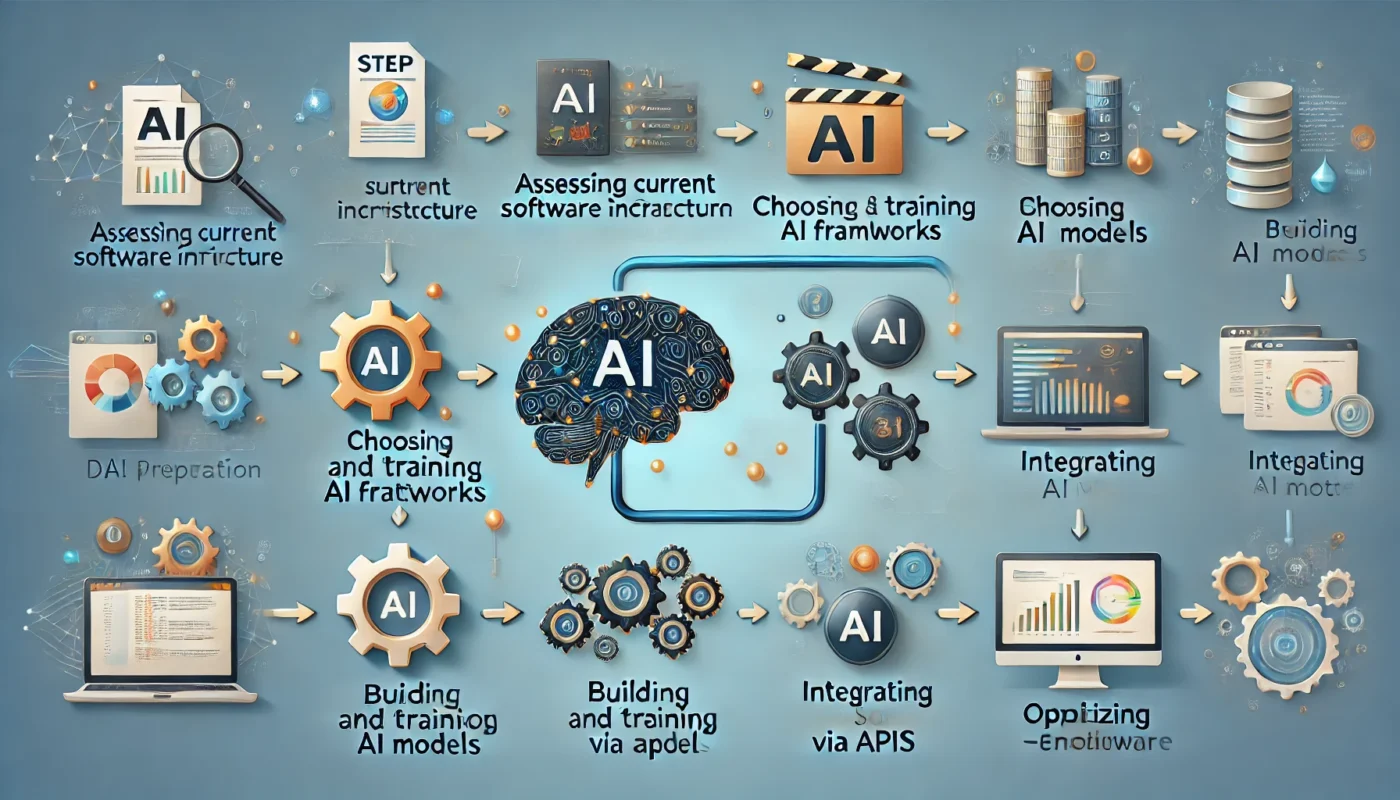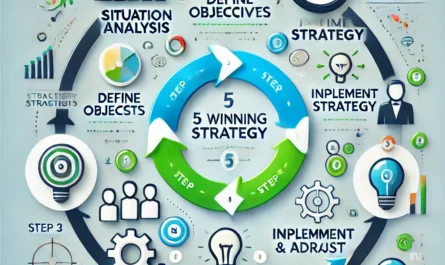Artificial Intelligence (AI) has become a key driver of innovation in various industries, from healthcare to finance, retail, and beyond. Integrating AI into existing software solutions can vastly enhance functionality, user experience, and operational efficiency. The process of AI integration, however, can be daunting without proper planning and understanding. This article delves into practical steps to seamlessly integrate AI into your existing systems and explore the significant benefits this technology brings.
Understanding the Benefits of AI Integration
Artificial Intelligence is not merely a trend; it is transforming how businesses operate, offering new possibilities for automation, analytics, and user personalization. One of the most compelling reasons to integrate AI into your software is the potential for improved decision-making and operational efficiency. AI can process vast amounts of data quickly, identifying patterns and insights that humans may overlook.
Additionally, AI can automate routine tasks, freeing up human resources to focus on more strategic activities. For customer-facing applications, AI enhances personalization, making interactions more intuitive and tailored to individual needs. These benefits translate into cost savings, increased productivity, and better customer engagement. But before jumping into the integration process, understanding your current software infrastructure is crucial.
Assessing Current Software Infrastructure
Before integrating AI, it’s essential to conduct a thorough evaluation of your current software infrastructure. Is your software capable of supporting AI technologies, or does it require updates or additional resources? This assessment involves examining data flow, storage capacities, and processing power. Software systems built with scalable architecture and modular designs are typically more adaptable to AI integration.
Moreover, existing bottlenecks and inefficiencies in the software must be identified. This helps determine where AI can offer the most value. In some cases, AI may only need to be embedded into a specific module, while other situations might call for a comprehensive overhaul of the system architecture.
Types of AI Technology for Software Integration
AI technology encompasses a wide range of functionalities, and choosing the right one depends on the specific needs of your software. Some of the most commonly used AI technologies include:
- Machine Learning (ML): For predicting outcomes and automating decision-making processes based on data.
- Natural Language Processing (NLP): To understand and process human language, making AI-powered chatbots and voice assistants possible.
- Computer Vision: AI’s ability to analyze and interpret visual data, useful for image recognition tasks.
- Robotic Process Automation (RPA): Automating repetitive, rule-based tasks, enhancing productivity without human intervention.
Choosing the appropriate AI technology will define the integration strategy and the tools required for implementation.
Setting Clear AI Objectives
A common pitfall when integrating AI into existing software is the lack of clear objectives. Defining what you want AI to achieve is critical to success. Do you want to automate a specific process, enhance decision-making, improve user experience, or analyze large datasets more efficiently? Without clear goals, AI integration can become a costly and time-consuming venture with unclear benefits.
Once the objectives are set, prioritize them. Not all goals need to be achieved simultaneously, and starting with the most impactful ones allows for a more phased and manageable integration process.
Choosing the Right AI Frameworks and Tools
The tools and frameworks you choose for AI integration will largely depend on the nature of the project. Popular AI frameworks include TensorFlow, Keras, PyTorch, and Scikit-learn. These libraries offer pre-built models and functions that simplify the AI development process, reducing the need for building algorithms from scratch.
For businesses that prefer cloud-based AI solutions, platforms like Google Cloud AI, AWS Machine Learning, and Microsoft Azure AI provide scalable and flexible environments for AI deployment. These platforms come with a host of APIs and pre-trained models, allowing for faster integration.
Selecting the right framework also depends on the technical skills of your team and the computing resources available. Cloud-based solutions are often preferable for organizations without extensive in-house AI expertise, as they minimize the need for maintaining hardware and infrastructure.
Data Preparation for AI Integration
AI models are only as good as the data they are trained on. Data preparation is a critical step in AI integration, as it ensures the AI can function effectively within your software. This involves collecting, cleaning, and structuring the data to make it usable by AI algorithms.
It’s essential to remove any irrelevant or duplicate data, fill in missing values, and label datasets properly. In some cases, you may need to acquire new datasets if the existing data doesn’t provide enough variety or depth for effective AI training.
For companies with sensitive information, data security and privacy concerns should also be considered. Integrating AI might involve sharing data with third-party tools, which requires careful handling to avoid breaches.
Creating APIs for Seamless AI Integration
One of the most efficient ways to integrate AI into existing software is by using Application Programming Interfaces (APIs). APIs allow your software to communicate with external AI services without needing to build an AI model from scratch. Many tech giants provide ready-to-use AI APIs for various tasks:
- Google Cloud API for natural language processing and image recognition
- IBM Watson API for chatbots and conversational AI
- Amazon AI for voice recognition and recommendation systems
Using APIs for AI integration not only speeds up the process but also ensures that your system can leverage state-of-the-art AI models, without requiring deep expertise in AI development.
Integrating Machine Learning Models
Machine Learning is one of the most popular forms of AI integration due to its wide range of applications. From recommendation engines in e-commerce platforms to fraud detection systems in banking, ML models provide powerful tools to enhance the functionality of existing software solutions.
Integrating an ML model into your software involves several steps: building and training the model, validating its accuracy, and then embedding it into the software application. In some cases, this may involve updating the software’s architecture to ensure it can handle the computational load of running machine learning algorithms in real time.
Enhancing User Experience with AI
AI can significantly improve the user experience of your software. Features like personalization, smart recommendations, and intelligent search can make your application more intuitive and engaging. For instance, e-commerce platforms use AI to recommend products based on past user behavior, while streaming services use it to suggest movies and shows.
AI-powered chatbots are also transforming customer service, offering instant support and resolving queries without human intervention. By integrating AI into the user interface, you can deliver more responsive and personalized interactions, improving overall satisfaction.
Automation through AI Integration
Automation is a key advantage of AI integration. By automating routine, time-consuming tasks, AI frees up human resources for more creative and strategic work. For example, in accounting software, AI can automate invoice processing, expense tracking, and even financial forecasting.
Robotic Process Automation (RPA) combined with AI can further enhance software by automating complex workflows. This not only improves efficiency but also reduces the likelihood of human error, providing a more reliable solution for businesses.
You can also read; How to Automate Business Processes Using Machine Learning
Optimizing Software with AI-driven Analytics
Data analytics is one of the most powerful applications of AI in software solutions. AI-driven analytics tools can process large datasets and uncover valuable insights, trends, and patterns that traditional analysis methods might miss. Predictive analytics, powered by AI, helps organizations forecast future outcomes based on historical data.
For example, in customer relationship management (CRM) systems, AI can analyze customer data to predict churn rates or suggest upselling opportunities. Integrating AI analytics into your software enhances its ability to deliver actionable insights, allowing for smarter decision-making and improved performance.



